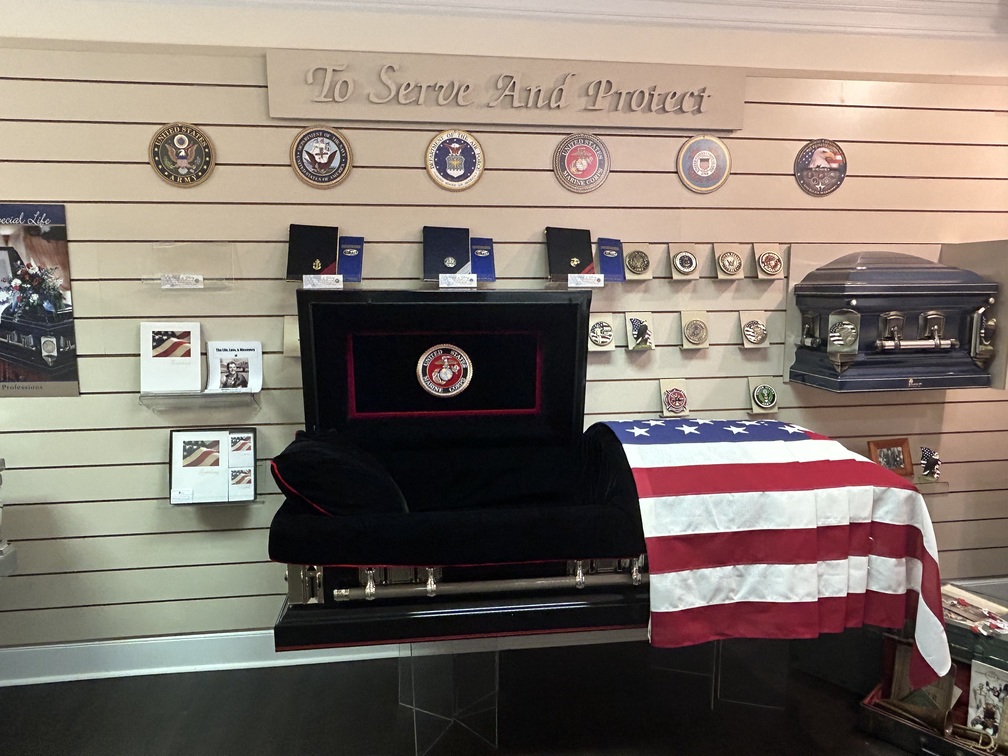
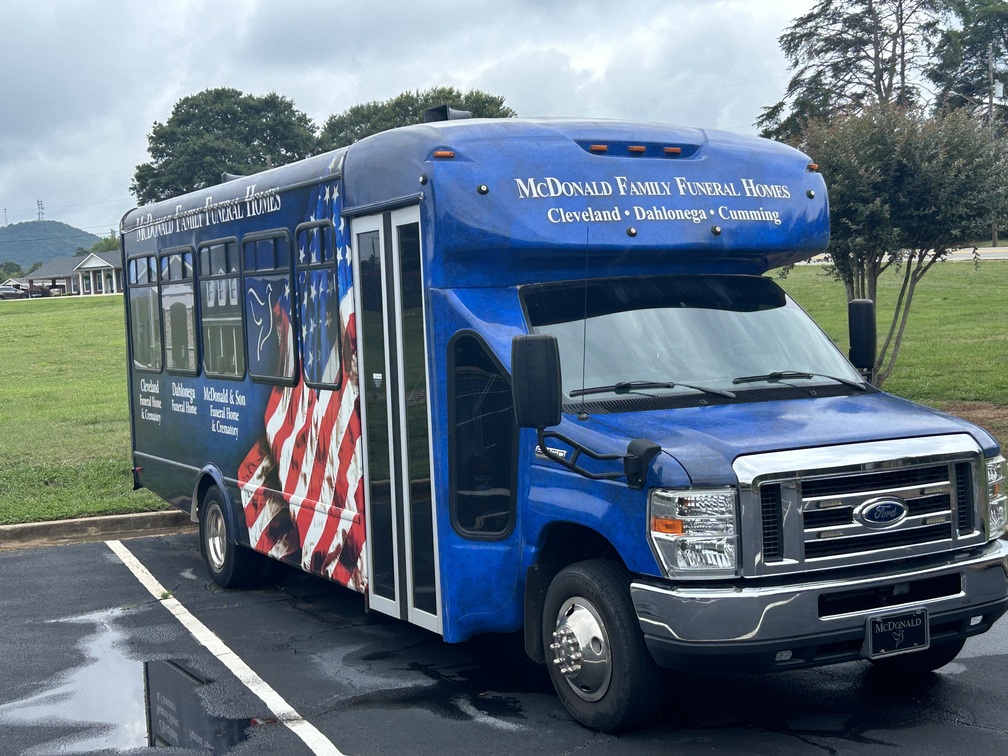
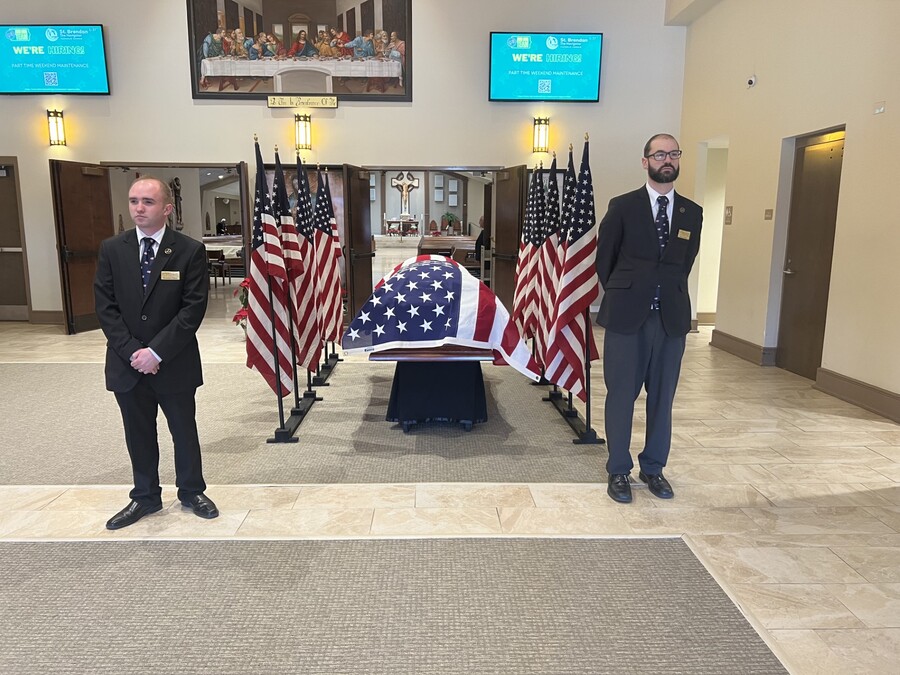
Active duty service members and Selected Reserve members are typically eligible.
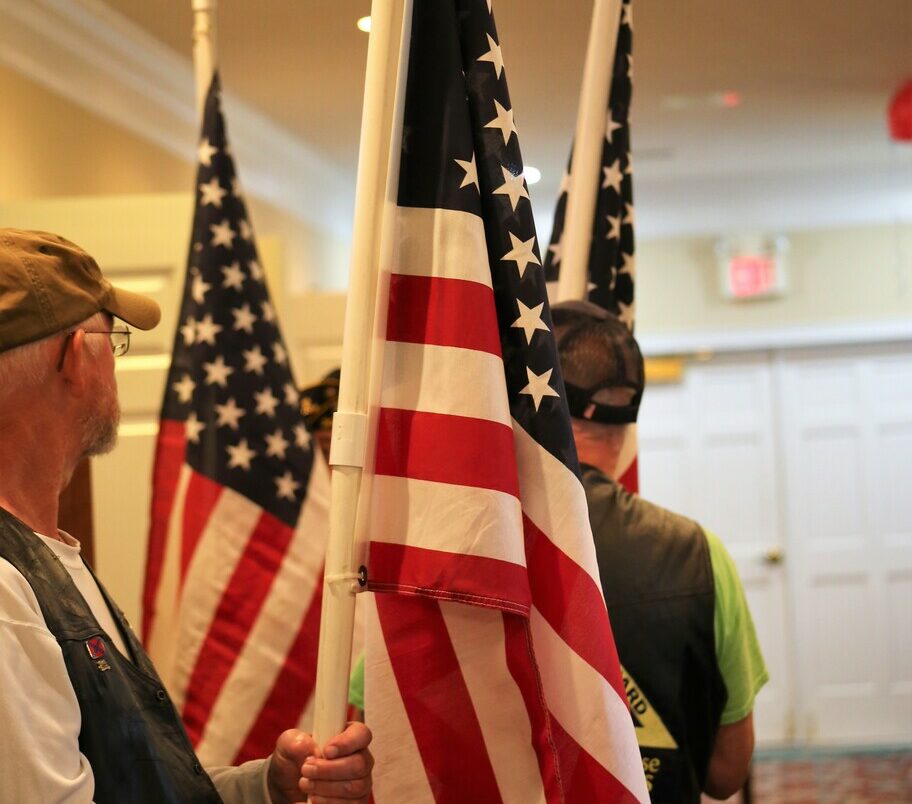

The Department of Veterans Affairs (VA) provides a United States flag at no cost to the next-of-kin of a deceased veteran. The flag is provided as a keepsake designed to honor the memory of the veteran. It is typically used during the funeral or memorial service during the flag folding and presentation ceremony detailed above before being presented to the family or next-of-kin.
Family members or close friends of the veteran may apply for a burial flag if the veteran meets one of the following eligibility requirements:
The Department of Veterans Affairs (VA) provides a United States flag at no cost to the next-of-kin of a deceased veteran. The flag is provided as a keepsake designed to honor the memory of the veteran. It is typically used during the funeral or memorial service during the flag folding and presentation ceremony detailed above before being presented to the family or next-of-kin.
Family members or close friends of the veteran may apply for a burial flag if the veteran meets one of the following eligibility requirements:

All eligible veterans are entitled to standard Military Funeral Honors (MFH) during their funeral or memorial service. This ceremony includes traditions for military honors that are deeply meaningful and symbolic to our service members and their loved ones. The elements of the standard MFH ceremony typically include the following components.
For a service with an urn, the flag will already be folded and carried next to the urn in a manner similar to ceremonies involving casketed remains. When the urn comes to its place of rest, the flag will be unfolded and ceremoniously held over the urn. It will then be folded again before the next part of the service.
Once the flag is folded, it will be presented to the family or other representative of the Veteran. The flag is intended to be a keepsake for the family and a long lasting tribute to remember the sacrifices made by the Veteran and their family. Many families choose to display the flag in a special flag case. There are also flag case urns designed to hold cremated remains while protecting the flag.
In addition to the standard MFH, some veterans may qualify for additional honors based on their rank. Full MFH may include elements such as a military flyover, color guard, and a rifle salute. To receive Military Funeral Honors, the required documentation must be submitted as soon as possible to provide sufficient time to organize resources. Your funeral home or funeral director can help with completing the correct forms and getting them submitted to the correct agency. You can also reach out to the Department of Defense with questions regarding the Military Funeral Honors program on their website.
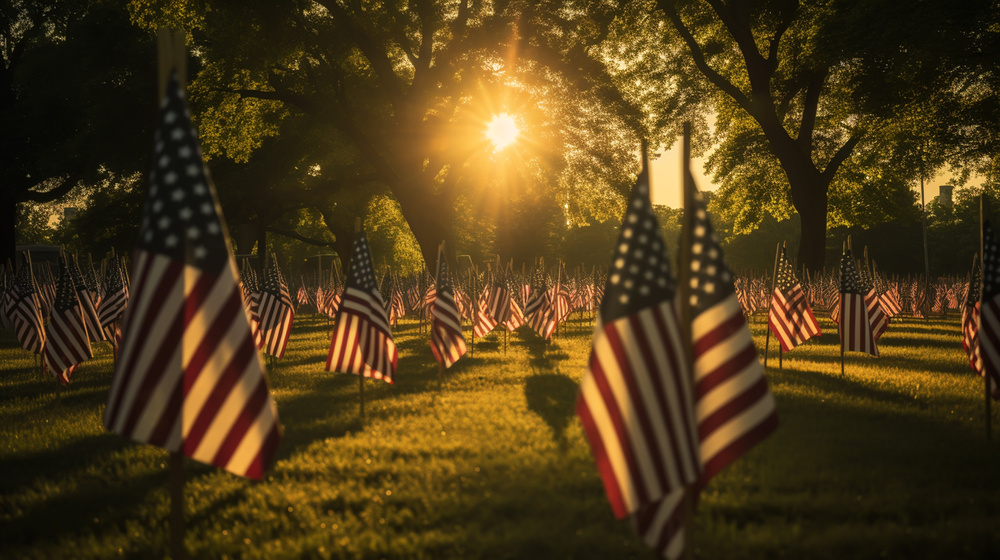
Eligible veterans may be entitled to burial in a VA national cemetery, along with their surviving spouse and children of the veteran in certain situations. Cremated remains may still be buried or interred in a VA national cemetery in the same manner as a traditional casketed burial, including any honors that may be rendered during the service.
The following benefits are included with burial in a VA national cemetery and are provided at no cost to the family of the veteran:
VA cemeteries only allow arrangements to be made at the time of death and therefore you may not reserve a space in advance. However, you can apply for and obtain a Certificate of Eligibility to inform the state of any intentions to be buried in a VA cemetery within that state. While specific plots cannot be reserved, you are able to reserve a space adjacent to the plot for burial of a spouse or minor child next to the veteran. Also be aware that there are frequently waiting periods before a burial in a VA cemetery can take place, as the VA needs time to confirm a decedent’s eligibility. This process can be helped by making sure the family has all of the necessary documentation and by obtaining pre-need burial eligibility confirmation when possible.